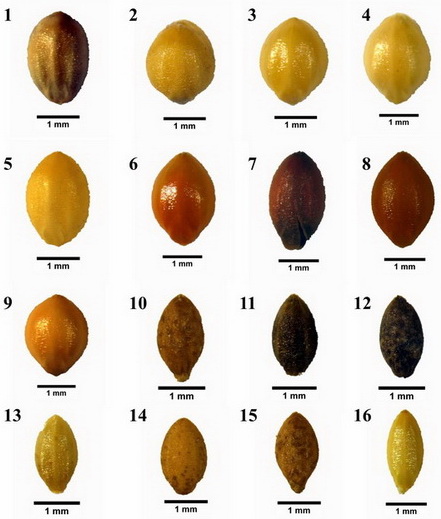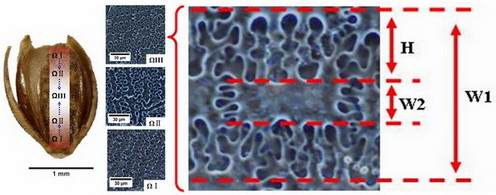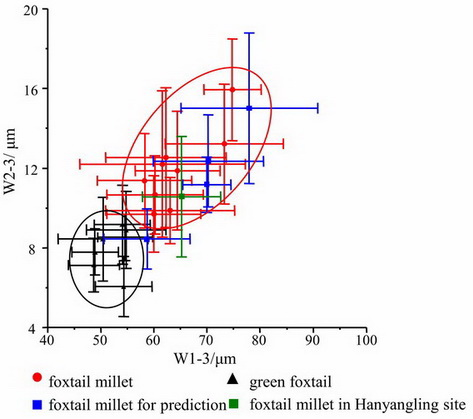Phytolith Analysis for Differentiating between Foxtail Millet (Setaria italica) and Green Foxtail (Setaria viridis)Update time:05 11, 2011
Postdoctor ZHANG Jianping and his collaborators give a meaningful method of separating foxtail millet and green foxtail using phytolithic analysis. They examine the silicon structure patterns in the glumes, lemmas, and paleas from inflorescence bracts in 16 modern plants of foxtail millet and green foxtail from China and Europe using light microscopy with phase-contrast and a microscopic interferometer. Their research shows that the silicon structure of ΩIII from upper lemmas and paleas in foxtail millet and green foxtail can be correspondingly divided into two groups. Their results also revealed that the husk phytolith morphologies of foxtail millets from China and Eastern Europe are markedly different from those from Western Europe. The implications of these findings for understanding the history of foxtail millet domestication and cultivation in ancient civilizations are significant. Zhang J, Lu H, Wu N et al. Phytolith Analysis for Differentiating between Foxtail Millet (Setaria italica) and Green Foxtail (Setaria viridis). PLoS ONE,2011, 6(5): e19726. (Download Here)
Figure 1. Photographs of Setaria grains. (Image by ZHANG) Figure2. Parameters of undulated patterns of silicified epidermal long cells from foxtail millet and green foxtail. (Image by ZHANG)
Figure3. Bivariate biplot of W1-3 and W2-3 values of measurements from epidermal long cells of foxtail millet and green foxtail. (Image by ZHANG)
|
Contact
Related Articles
Reference
|
-
SIMSSecondary Ion Mass Spectrometer Laboratory
-
MC-ICPMSMultiple-collector ICPMS Laboratory
-
EM & TEMElectron Microprobe and Transmission Electron Microscope Laboratory
-
SISolid Isotope Laboratory
-
StIStable Isotope Laboratory
-
RMPARock-Mineral Preparation and Analysis
-
AAH40Ar/39Ar & (U-Th)/He Laboratory
-
EMLElectron Microscopy Laboratory
-
USCLUranium Series Chronology Laboratory
-
SASeismic Array Laboratory
-
SEELaboratory of Space Environment Exploration Laboratory
-
PGPaleomagnetism and Geochronology Laboratory
-
BioMNSFrance-China Bio-mineralization and Nano-structure Laboratory

 Print
Print Close
Close


